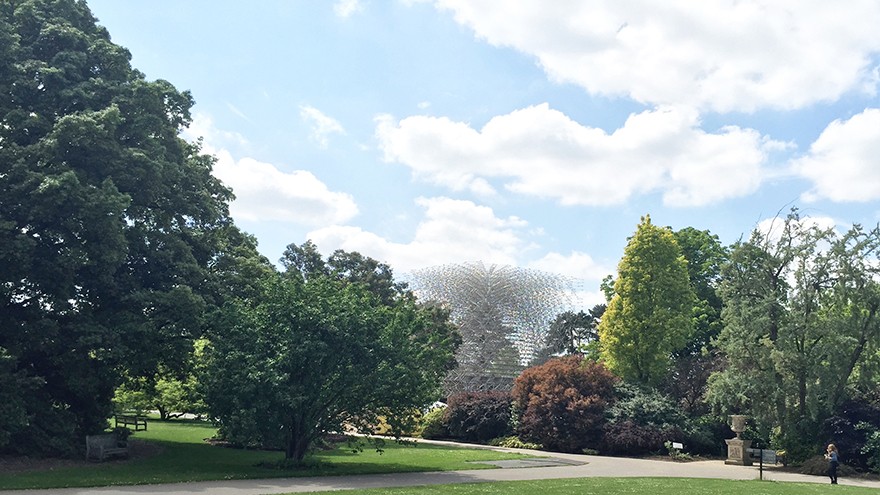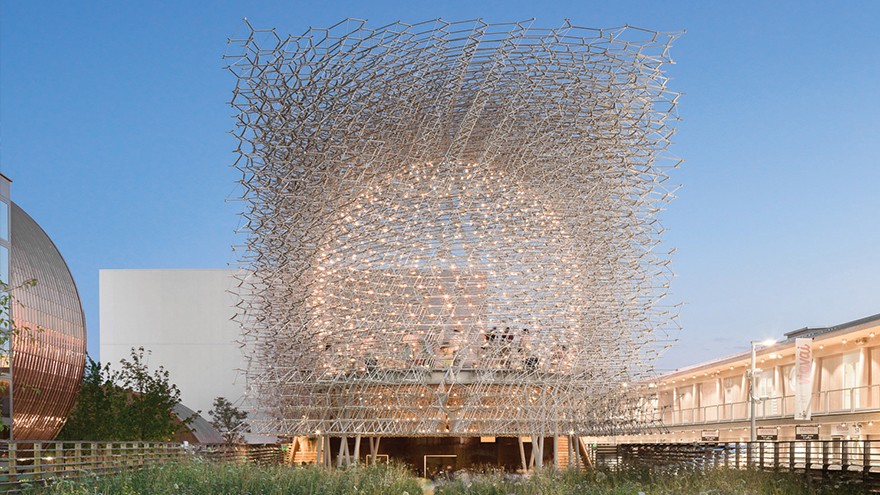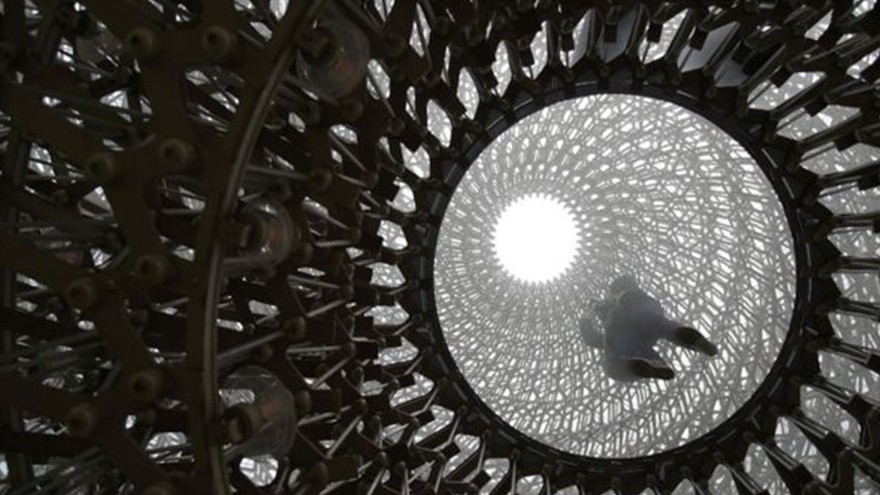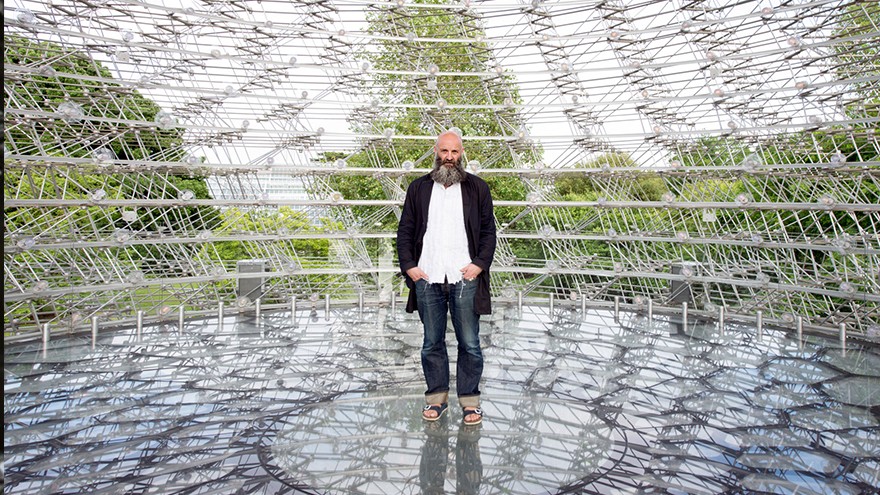Inside the Royal botanical gardens, in London, a 40-ton steel structure now dominates the skyline. Designed by critically acclaimed British designer, Wolfgang Buttress, the 17 000-piece installation tries to envelop visitors with an experience by using LED lights and sound to replicate the movements of a real beehive.
Buttress originally designed the installation for the 2015 Milan Expo where it won the Gold award for best exhibition. Inspired by research done on the deterioration of bees in the English countryside, Buttress designed the pavilion to help visitors understand the importance of protecting the honeybee. This particular species of bee is threatened by climate changes in the United Kingdom.
The pavilion’s changes in light and sound are triggered by a hive inside the gardens. Through the installation, Buttress tries to replicate the four different communication techniques bees use. These include the tooting and quacking signals that virgin queen bees make when they challenge each other in a display of strength to determine who will be the queen of the hive; begging, which is when a bee requests food from another bee; and the waggle dance, which communicates the location of a good food source.
The Hive opened on 18 June in the Royal botanical gardens, also known as the Kew gardens. In being relocated from Milan to London, the pavilion has also become the first UK Pavilion to be reused and brought back to Britain after an Expo.
The designer describes the Hive as an “immersive space for us to explore the urgent issues we face in relation to pollinators.”










